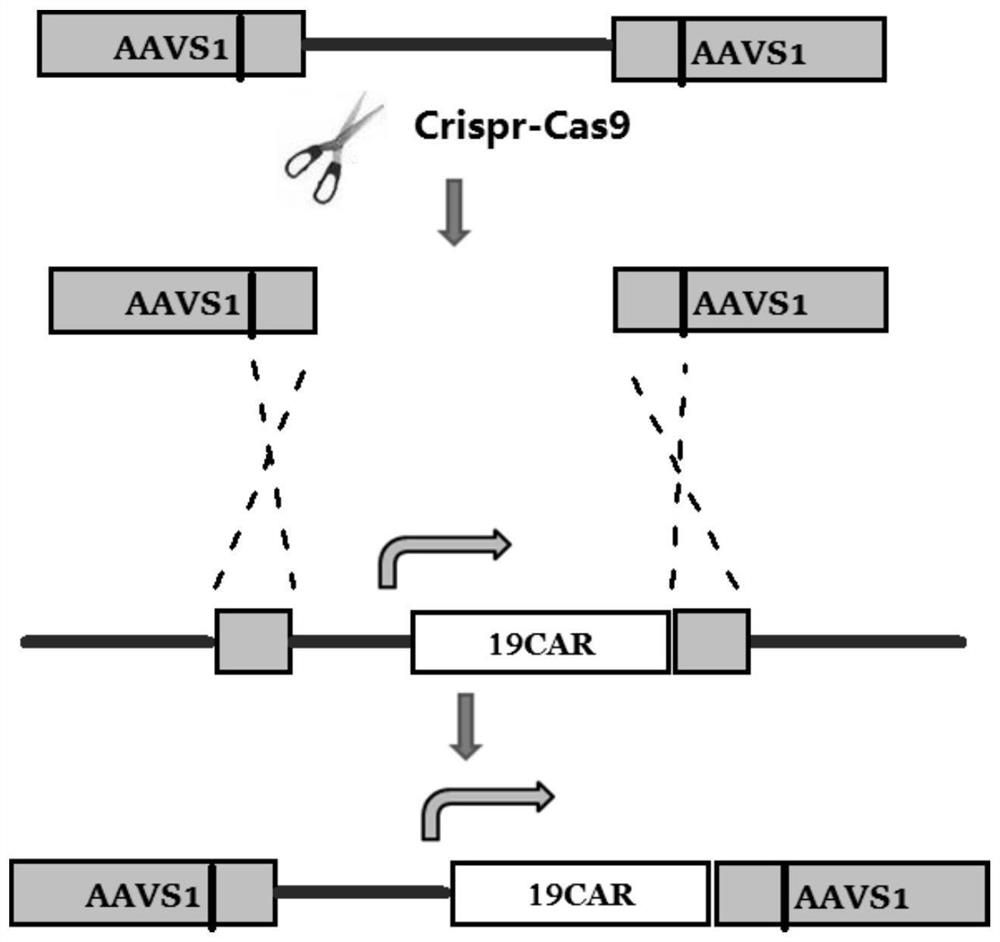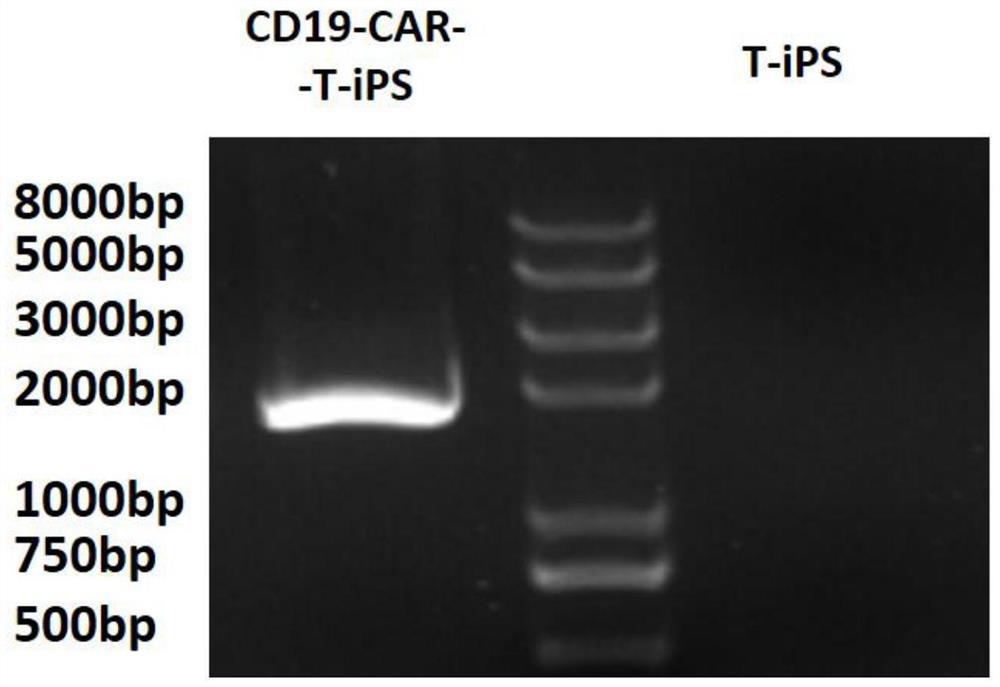Method for preparing CD19-targeted chimeric antigen receptor NK cells from human pluripotent stem cells and application of CD19-targeted chimeric antigen receptor NK cells
A technology of pluripotent stem cells and NK cells, applied in the field of chimeric antigen receptor NK cells, which can solve problems such as long cycle, long expansion time, and unclear medium components
- Summary
- Abstract
- Description
- Claims
- Application Information
AI Technical Summary
Problems solved by technology
Method used
Image
Examples
Embodiment 1CD1
[0120] Example 1 Preparation of CD19-CAR-NK cells
[0121] 1. The structure and sequence of CD19-CAR (NK-19CAR) gene
[0122] A complete CAR molecule mainly includes extracellular domain, transmembrane domain and intracellular domain. The extracellular domain is composed of a single-chain antibody (scFv) of a monoclonal antibody responsible for recognizing and binding to an antigen and a connecting hinge region (Hinge). The intracellular domain consists of a co-stimulatory domain and a signal transduction domain. The optimally designed CD19-CAR gene structure of the present invention is beneficial to promote the activation and proliferation of CD19-CAR-NK cells in the later stage, and enhance the lethality of CD19-CAR-NK cells to tumors.
[0123] The structural molecule of the CD19-CAR of the present invention (also referred to as NK-19CAR, 19CAR in this text and the accompanying drawings) consists of a signal peptide, an anti-CD19 heavy chain and a connecting region, an ant...
Embodiment 2
[0200] Example 2 In vitro killing ability of CD19-CAR-NK cells (cytotoxicity test)
[0201] The K562 cells and RAJI cells in this example are from the Cell Center of the Institute of Basic Medical Sciences, Chinese Academy of Medical Sciences, Beijing.
[0202] The human leukemia cell line CD19-K562, which is more sensitive to NK cell killing, and the human leukemia cell line CD19-K562 overexpressing CD19 by lentivirus, and the lymphoma RAJI cells expressing CD19 were selected as target cells, and a luciferase-based reporter gene transfection method was used to evaluate the NK- The ability of 19CAR gene-modified NK cells to kill target cells. Transfect the target cells with the reporter gene—luciferase (luc) gene, and establish a stable transfected target cell line, so as to measure the cytotoxicity and apoptosis mediated by NK cells. By measuring the activity of the reporter enzyme (representing the number of dead target cells) released into the culture medium, the percentag...
PUM
 Login to View More
Login to View More Abstract
Description
Claims
Application Information
 Login to View More
Login to View More - R&D
- Intellectual Property
- Life Sciences
- Materials
- Tech Scout
- Unparalleled Data Quality
- Higher Quality Content
- 60% Fewer Hallucinations
Browse by: Latest US Patents, China's latest patents, Technical Efficacy Thesaurus, Application Domain, Technology Topic, Popular Technical Reports.
© 2025 PatSnap. All rights reserved.Legal|Privacy policy|Modern Slavery Act Transparency Statement|Sitemap|About US| Contact US: help@patsnap.com



